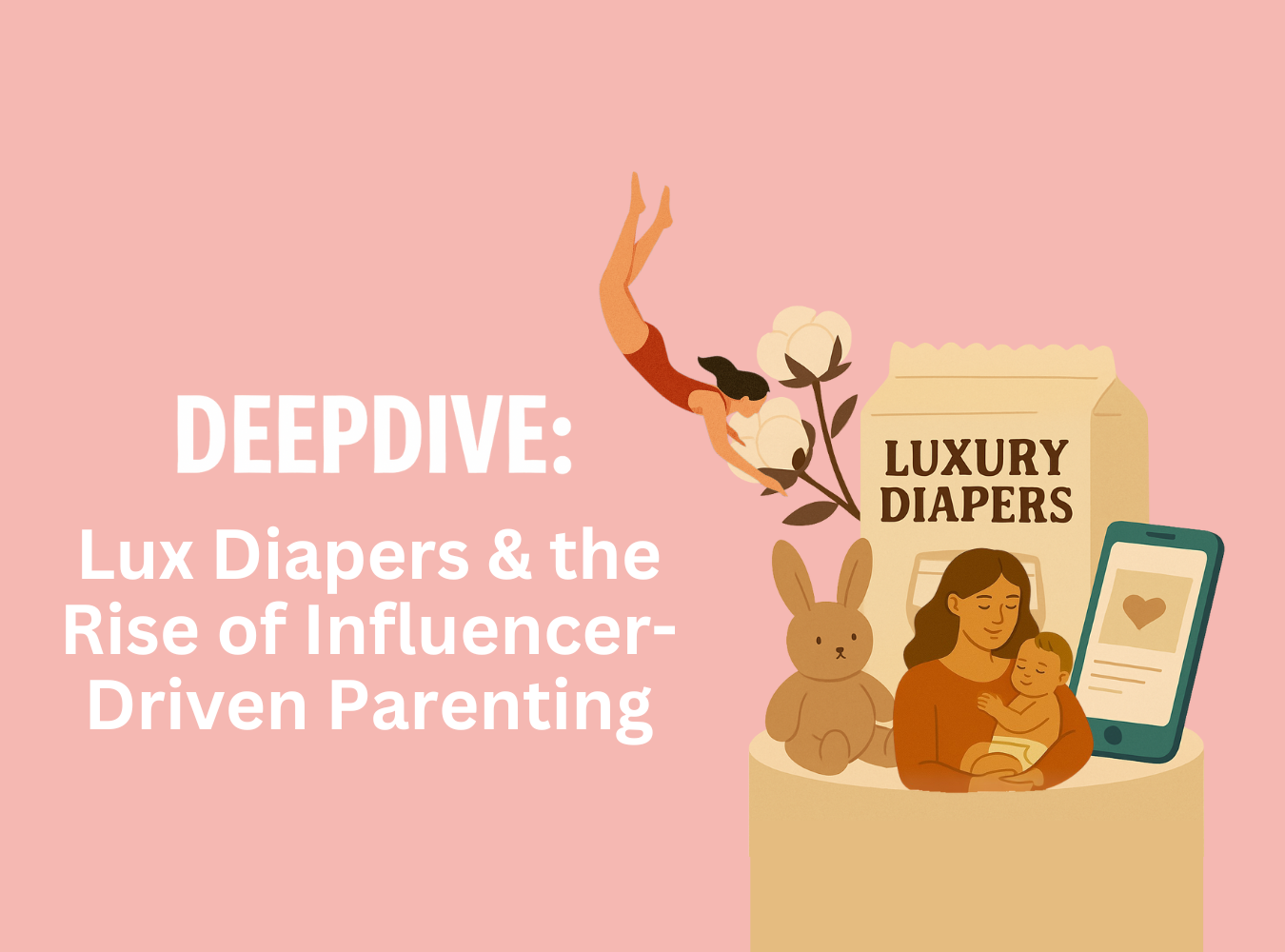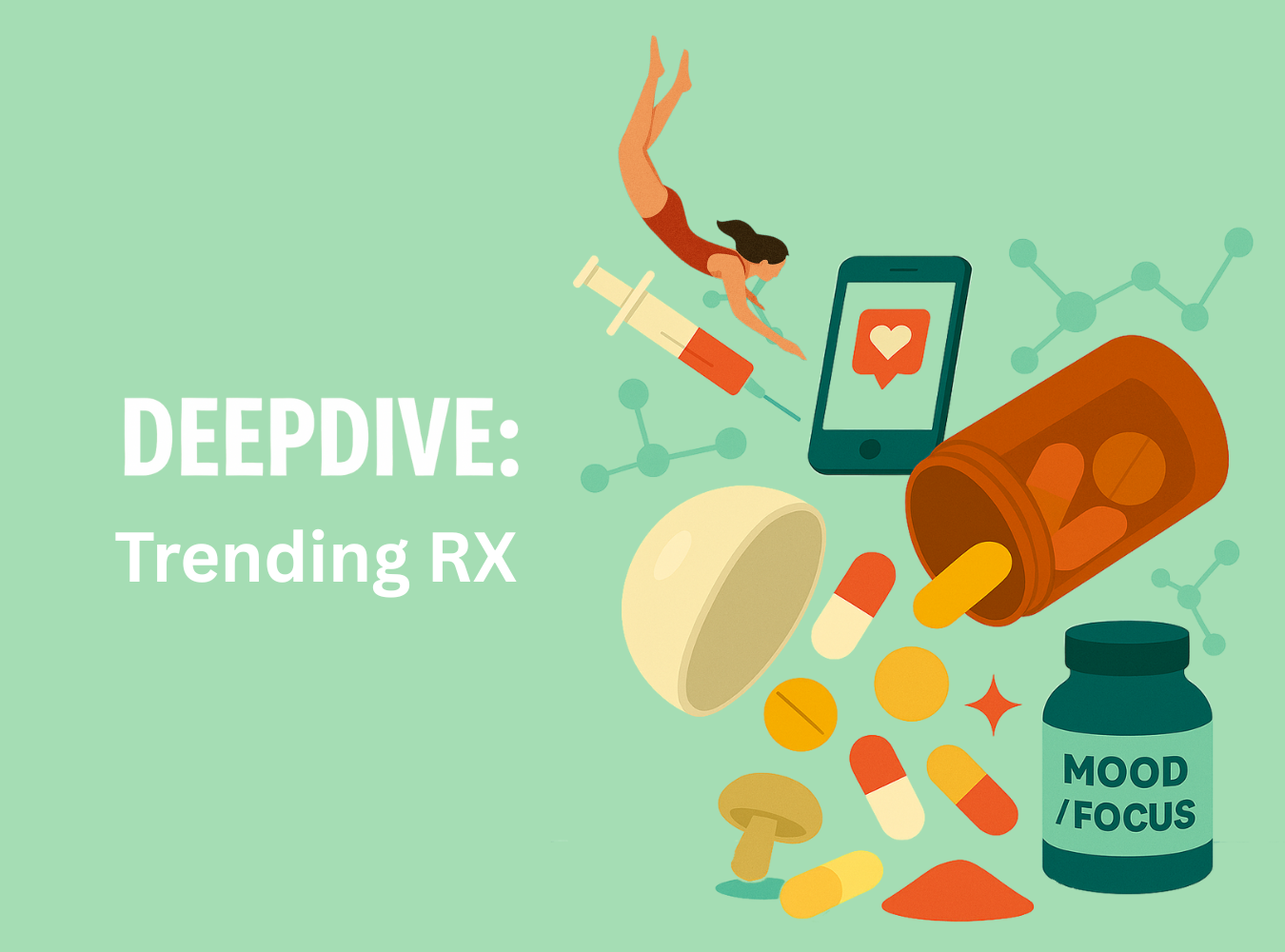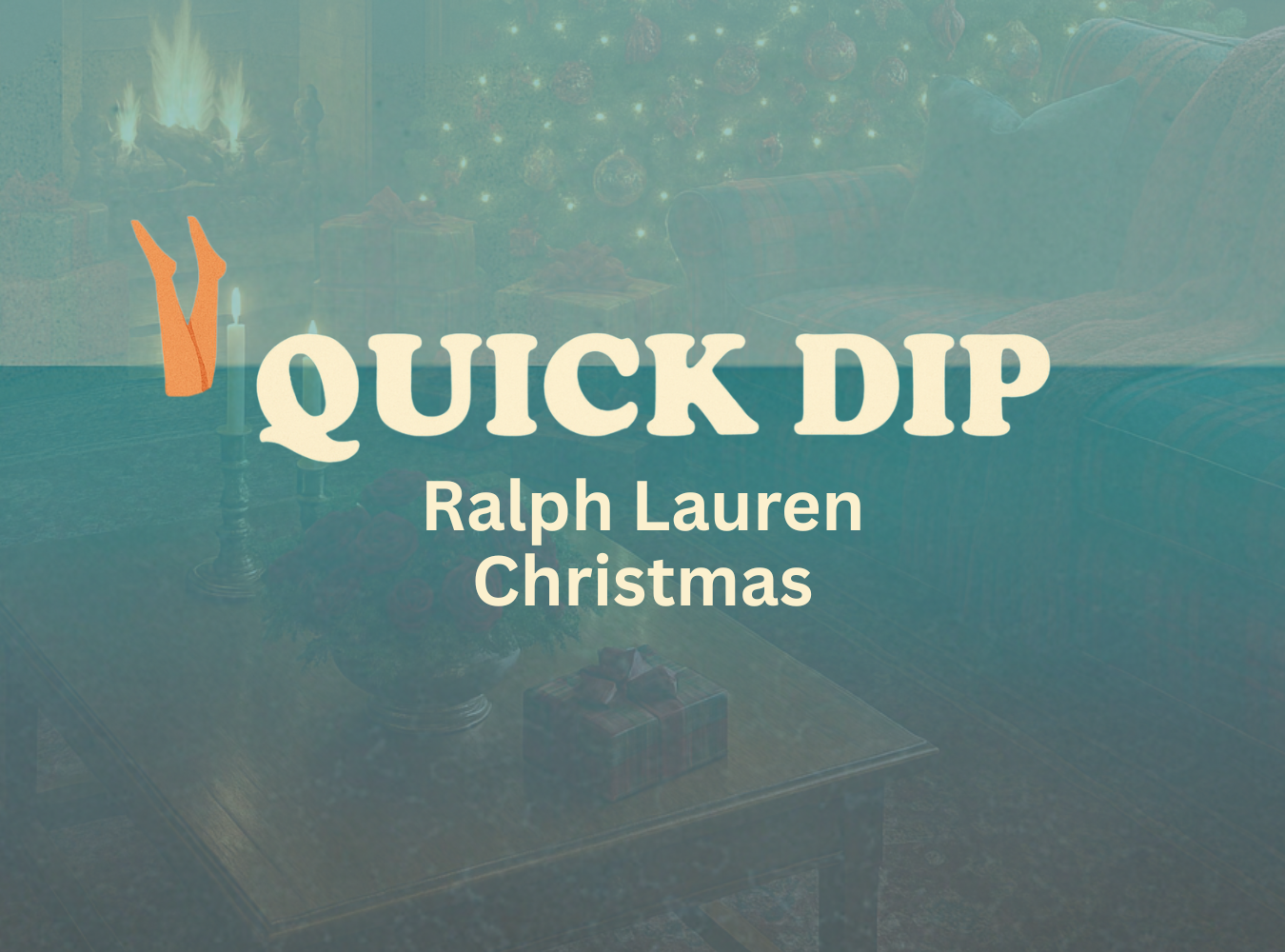The New Status Symbol: Clean, Soft, and Instagram-Worthy
Diapers have always been a necessity. Yet in recent years, they have begun to take on a new role in parenting culture. What was once a utilitarian purchase is now becoming a lifestyle choice that signals values like sustainability, softness, safety, and even design sensibility. Luxury diaper brands such as Coterie, Millie Moon, and Kudos push diapers into an elevated space. And at the center of this shift are influencers—especially millennial and Gen Z moms—who use TikTok, Instagram, and Facebook to share how these products fit into everyday life.
The U.S. diaper market is worth $10.6 billion, and premium growth is outpacing the rest of the category. For many new parents, influencers are not just guides to style or wellness. They have become trusted advisors on something as routine as changing a diaper.
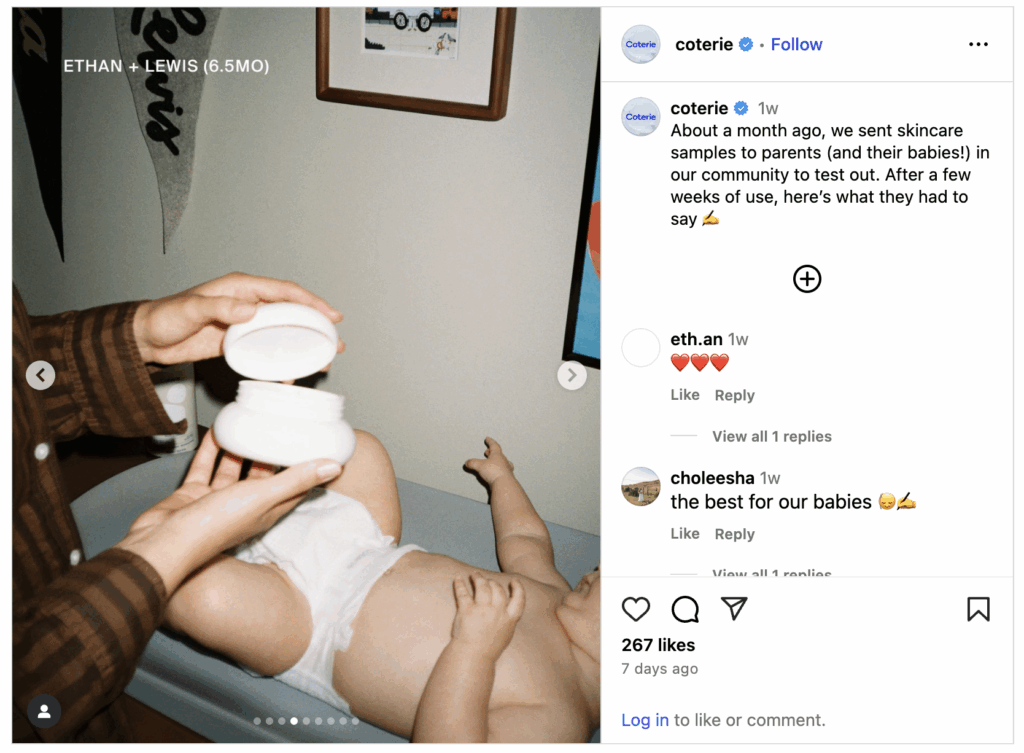
What’s Happening: How Influencers Frame the Luxury Diaper Category
Coterie, Millie Moon, and Rascals are three examples of how diaper brands use influencers to turn everyday products into lifestyle stories. Each brand has approached content differently, but all rely on creators to translate product benefits into relatable parenting moments.
- Coterie built its equity through influencer storytelling, from high-profile campaigns with Karlie Kloss to everyday mom creators who frame the brand as a tool for stress relief and better sleep.
- Millie Moon tapped smaller creators with its “Find Comfort Creator Program.” The result: relatable parenting stories that highlight softness and comfort without feeling like ads.
- Rascals became the #1 diaper brand on TikTok by encouraging parents to share day-in-the-life clips, unboxings, and diaper change humor. Their influencer strategy shows that UGC-style content consistently outperforms polished campaigns.
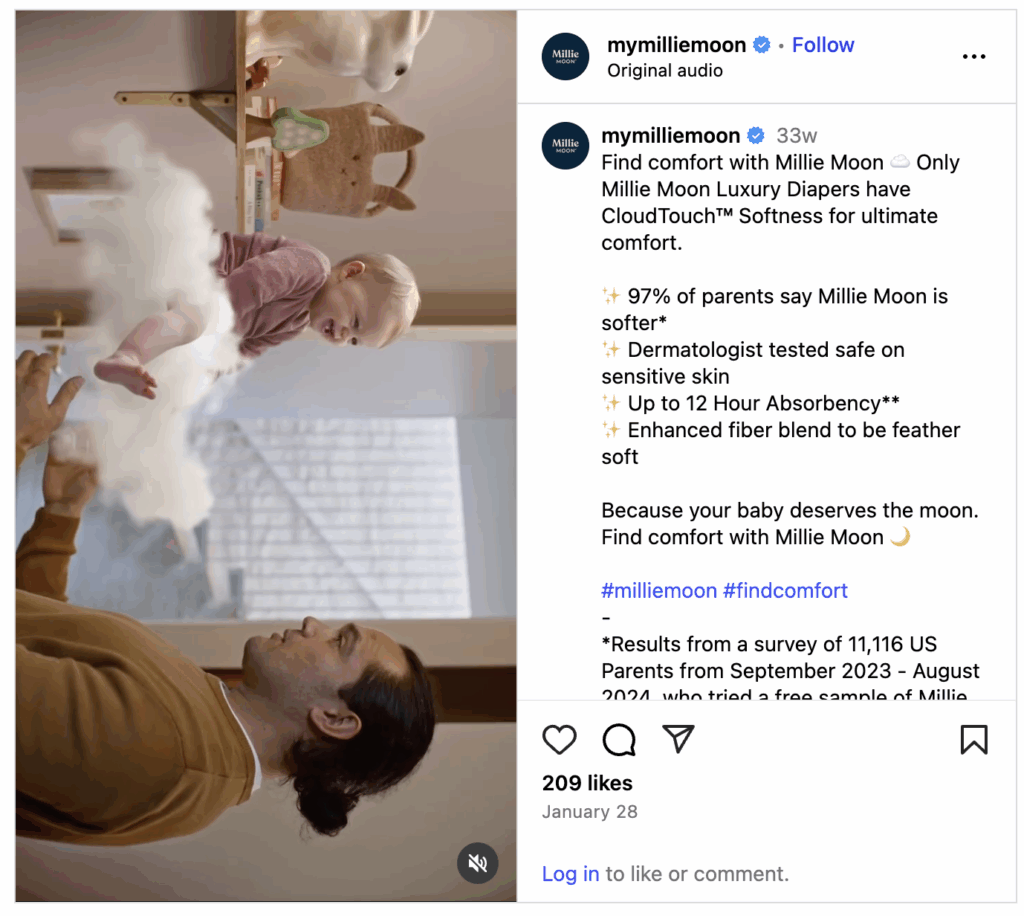
How Influencers Highlight Features
Each brand leans into different features to capture attention, and influencers translate those details into stories parents can relate to. Some emphasize softness, others highlight wellness, and many connect their claims to eco-conscious values. Together, these feature spotlights become lifestyle cues as much as product differentiators.
- Millie Moon creators emphasize CloudTouch™ Softness and dermatology-backed approval, reinforcing the brand’s craftsmanship and premium feel.
- Coterie influencers frame the brand around parental well-being and stress relief, spotlighting overnight leak protection and premium aesthetics.
- Kudos creators stress its 100% U.S.-grown cotton liner with #CottonOverPlastic, positioning the brand as an eco-friendly choice.
- Huggies Skin Essentials is often presented as both “boujee” and reliable, with influencers framing it as gift-worthy while leaning on legacy trust.
- Happy BeeHinds sits in the cloth diaper segment, but it illustrates how even reusables rely on organic cotton and hemp stories to connect with eco-conscious parents.
Some brands also weave their manufacturing choices into the story. Coterie and Kudos often mention TCF pulp as part of their “clean” positioning, while Millie Moon points to ECF as a safer alternative. These details don’t dominate campaigns, but they occasionally surface in influencer content as subtle signals of eco-consciousness.
What the Data Reveals
LF data shows that positioning-heavy posts underperform. Coterie’s positioning posts drive 67% less engagement than average, while Millie Moon’s are 80% below. Meanwhile, comedic skits, parenting hacks, and heartfelt UGC see stronger results. Authenticity wins. For example, Coterie sees stronger results when influencers share overnight leak-free success stories, while Millie Moon resonates more with TikTok parenting fails and comedic takes compared to its softer brand positioning posts.
Legacy brands dominate in volume and Facebook-driven trust. Some have become household names, often used synonymously with diapers in general, but that ubiquity also invites scrutiny around performance and quality. They have a much larger sample size of parents sharing both positive and negative experiences. Influencers often help balance this by highlighting trusted features, sharing relatable success stories, and softening negative perceptions with authentic parent voices. Premium newcomers often rely on giveaways for visibility, but emotional trust can lag. Honest Company excels with emotional UGC, while Hello Bello shows how smaller brands can maintain high trust-to-distrust ratios. In every case, influencer-driven authenticity is what moves perception from awareness to loyalty.
Parenting Platform Dynamics
Different platforms now serve as distinct parts of the parenting journey. Together they create a kind of digital nursery, where parents discover, question, and validate their diaper choices in community.
- TikTok is where humor, vulnerability, and hacks thrive, but it also crosses into aspirational aesthetics. Brands do well when influencers weave diapers into relatable parenting stories while making the product feel stylish and share-worthy.
- Instagram blends aspirational aesthetics with authentic captions. Reels let influencers make luxury packaging and design feel both beautiful and approachable.
- Facebook remains crucial for peer-to-peer validation in parenting groups, where community recommendations often shape purchase decisions more than ads.
- YouTube fills the authority gap with longer reviews and comparisons, complementing the quick-hit style of TikTok and Instagram.
LF data notes that a handful of brands account for nearly 80% of engagement in the luxury category, showing the value of consistent posting and accessible positioning.

Coterie’s Newborn Gift bundle box
Patterns That Work (and Pitfalls)
Successful influencer-driven strategies include:
- Highlighting sensory differentiation like softness or “cloud-like” textures
- Using transparency and clean claims to build trust
- Leaning into aesthetic branding and unboxing moments
- Showing up across both DTC and retail for credibility
- Tying products to sustainability and social good
- Sharing compelling stories of heritage or inspiration
- Offering subscriptions or bundles to reduce sticker shock
Risks include overpromising on performance, greenwashing, recessionary pushback on price, and inconsistent luxury experiences across packaging, delivery, or service.
The Price Conversation Online
Influencers play a significant role in how parents weigh the cost gap:
- Pampers: about $0.23 per diaper
- Huggies: about $0.22 per diaper
- Millie Moon: $0.23–$0.46 per diaper
- Kudos: around $0.28–$0.40 per diaper
- Coterie: roughly $0.60 per diaper in subscription bundles
Luxury diapers cost two to three times more than mainstream ones. Influencers often address this by emphasizing fewer rashes, a better fit, or peace of mind—helping parents feel the price is worth it. However, the focus on lifestyle cannot be understated. Luxury brands frame their products as part of an aspirational lifestyle, with content that makes even everyday diapering feel elevated and stylish.
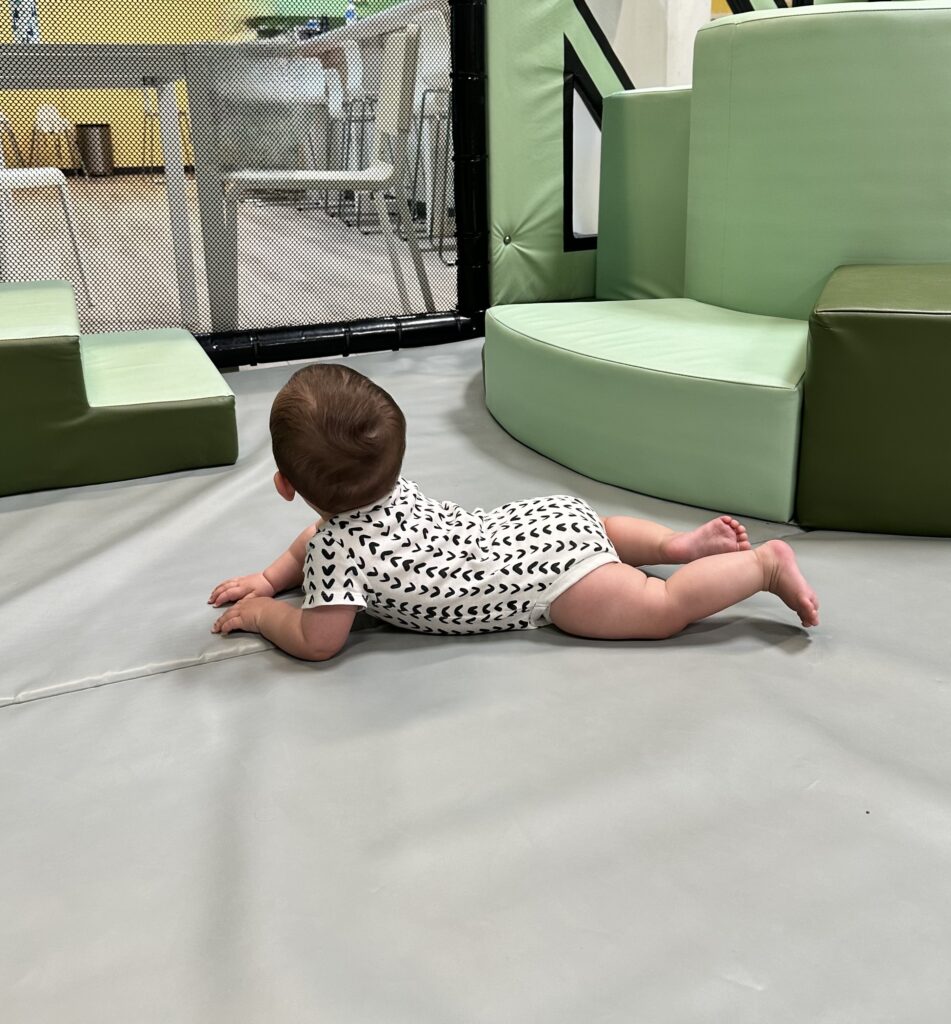
My personal focus group
A Personal Lens
As a mom of a two-year-old, I’ve experienced this shift myself. I tested nearly every diaper in the early months and immediately noticed how different they were. Like many new parents, we stocked up with various brands in the newborn and size one stages and found out firsthand that every baby is different, and what fits your baby may not work for someone else. My first premium experience came during a Buy Buy Baby closing sale, where I picked up a small pack of luxury diapers for $5 instead of $40. The difference in feel was striking. Eventually, I found one brand that fit my daughter best, reduced rashes, and tugged less on her legs. How did I find them? Via parenting influencers on TikTok, singing their praises. However, the price remains the biggest challenge, which keeps me open to exploring other luxury brands. Influencers often underscore this reality by reminding parents that fit varies for every baby, and they highlight how finding the right match is part of the parenting journey.
Premium diapers have also become part of my gifting routine. At baby showers, I bring luxury diaper newborn bundles filled with diapers, a stylish tote, and a soft toy. They always spark a wow moment, showing how even an everyday item can feel like a luxury gift. Influencers capture this same sentiment, framing these bundles as proof that diapers can be both essential and aspirational.
Market Context
Industry research from Nonwovens Industry reinforces why influencers matter. Parents are seeking eco-friendly, plant-based, and biodegradable options. Premium & luxury diapers are growing faster than value tiers. Product innovation in absorbency and leak protection remains central, even if influencers emphasize aesthetics and lifestyle. DTC and private labels are gaining ground by positioning themselves as affordable luxuries. North America and the Asia-Pacific lead premium adoption.
Social marketing is built on this foundation. Without influencer narratives, these trends would remain hidden in product specs. Instead, creators make them part of everyday parenting stories.
Key Takeaways for Marketers
- Emotional storytelling and micro-influencers redefine the diaper aisle.
- UGC-style content on TikTok consistently outperforms polished ads.
- Influencer campaigns that highlight real motherhood moments beat technical specs.
- LF data shows positioning content underperforms, but influencers make it matter.
- Platforms act as parenting ecosystems: TikTok for entertainment, Instagram for storytelling, Facebook for trust, YouTube for authority.
- Content that resonates most often comes from real parenting moments:
- Comedic takes on diaper struggles
- Q&As that invite community interaction
- Problem-solving hacks parents can use immediately
- Heartfelt comfort stories that connect emotionally
- Millie Moon’s TikTok giveaway clips of parenting fails
- Rascal + Friends’ day-in-the-life humor posts
- Honest Company’s emotional UGC about milestones
- Overnight success stories where parents report fewer leaks
- Legacy brands, like in every industry, are both widely trusted and heavily scrutinized, but influencers help balance perceptions by sharing relatable success stories and reinforcing the brand’s long-standing reliability.
Final Thought
Luxury diapers are not just upgraded basics. They have become symbols of how parenting is shaped by influencers, storytelling, and community. As social platforms continue to evolve into digital nurseries, the brands that balance price, performance, and authenticity—and let influencers translate those values—will be the ones parents trust and proudly share.
Sources
- People: https://people.com/karlie-kloss-journey-of-motherhood-coterie-campaign-kids-exclusive-8580340
- Millie Moon: https://mymilliemoon.com/find-comfort-creator-program/
- Shorty Awards: https://shortyawards.com/16th/rascal-friends-1-diaper-brand-on-tiktok
- Reuters: https://www.reuters.com/business/healthcare-pharmaceuticals/pg-selling-china-made-luxury-bumbum-brand-diapers-market-share-falters-2025-08-25
- Target: https://www.target.com/p/bumbum-disposable-diapers/-/A-94635222
- Bumbum: https://mybumbumbaby.com/en-us/our-diapers/
- Exchange4Media: https://www.exchange4media.com/advertising-news/diaper-brand-lovingles-campaign-talks-new-moms-well-being-140463.html
- LF Data: https://www.listenfirstmedia.com (5/26/25 – 7/23/25)
- Nonwovens Industry: https://www.nonwovens-industry.com/issues/2023-01-01/view_features/trends-in-the-baby-diaper-market-915122/

